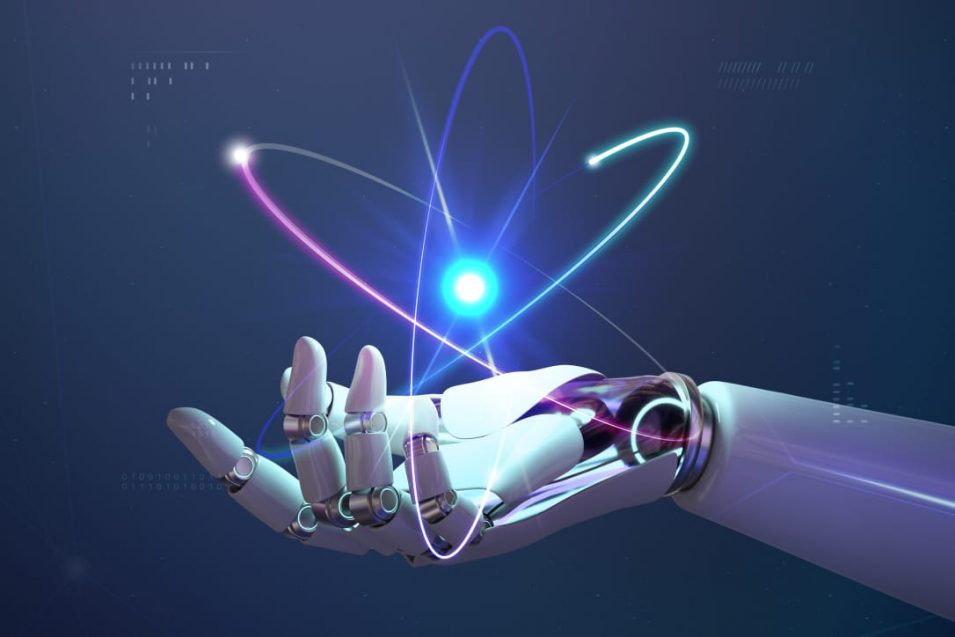
09 Jun Introduction to AI for developers
Artificial intelligence has evolved rapidly in recent years and has reached a turning point in its use and application in various areas. It is a technology capable of replicating human cognitive abilities, such as learning, reasoning and perception, through the use of algorithms, mathematical models and data processing technologies.
Types of AI
- AI is divided into several types, and each has its own characteristics and applications. One of the most common types is rule-based AI, which is used to program specific solutions that follow a set of predefined rules. This form of AI is useful in applications that require a precise solution and specialized knowledge, such as medical diagnostic systems or financial risk management systems.
- Machine learning-based AI, on the other hand, allows machines to learn and improve on their own. The machine is fed a large data set and the AI learns to recognize patterns and make predictions based on that data. This type of AI is commonly used in data analytics applications, such as predictive analytics and speech recognition.
- Neural network-based AI is another type of AI that is used to simulate the way the human brain processes information. The neural network uses layers of interconnected nodes that process information and learn as information flows through the network. This type of AI is commonly used in computer vision, speech recognition and natural language processing applications.
Applications of AI
AI is a versatile technology that can be applied in different fields and disciplines. Developers can use AI to create personalized chatbots and recommendation systems based on user behavior. It is also used in business applications, such as process automation, supply chain optimization and risk management.
AI also plays an important role in healthcare, where it is used for diagnostics and medical image analysis. It is also used in security applications, such as fraud detection and crime prevention. In education, AI is used to enhance the learning experience through content personalization and student progress tracking.
Desafíos de la IA
While AI offers many advantages, it also presents significant challenges for developers. One of the biggest challenges is the lack of transparency in AI algorithms, which can lead to biased or inaccurate results. It is also important for developers to consider the ethical and legal aspects of AI, such as data privacy, cybersecurity and social responsibility.
Another major challenge is the lack of public understanding of how AI works and how it is being used. Public understanding and education are needed to address societal concerns about AI and to foster a more informed and meaningful dialogue about its use and regulation.
Future of AI for developers
Developers must also consider the challenges of integrating AI into existing systems. Integrating AI into legacy systems can be complex, and it can be difficult for developers to ensure that AI integrates correctly with other systems and technologies. In addition, AI can require a large amount of hardware and software resources, which can be costly and can make integration even more complex.
As AI becomes more common in software development, it is also important for developers to understand how AI works and how they can use it effectively. This involves having a solid understanding of machine learning algorithms and neural networks, as well as the concepts of deep learning and natural language processing (NLP).
In addition, AI can be used to create solutions in a wide variety of fields, such as medicine, engineering and agriculture. In medicine, AI can be used to analyze large medical datasets to help diagnose diseases and improve patient treatment. In agriculture, AI can be used to analyze large amounts of data on weather and soil conditions to help farmers make more informed decisions about planting and harvesting crops. In engineering, AI can be used to analyze large amounts of sensor data to predict and prevent equipment and machinery failures.
Another field where AI has had a significant impact is robotics. AI has enabled developers to create more advanced and sophisticated robots that can perform a variety of tasks, from manufacturing to space exploration. AI-powered robots can learn from their environment and adapt to new situations, making them ideal for tasks that require a high degree of precision and flexibility.
Importantly, AI also raises ethical and legal concerns. As AI becomes more commonplace, it is important for developers to address these challenges. For example, developers must consider how to protect the privacy of user data, how to ensure that AI algorithms are not biased, and how to ensure transparency and accountability in the use of AI.
In conclusion, AI is a technology that has transformed the world of technology and computing in recent years, and has become a key tool for developers looking to create advanced and customized technology solutions for their customers. While AI presents challenges, its potential to improve the efficiency, accuracy and customization of technology solutions is enormous, and it is expected to continue to transform the world of technology and computing in the coming years.
Sources: Amazon, Amazon Ebook, Machine Learning Mastery, Microsoft Docs y Research Gate.
